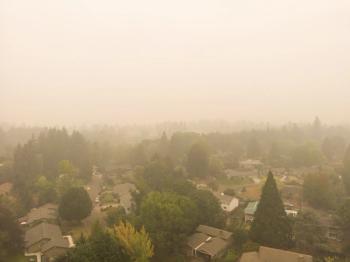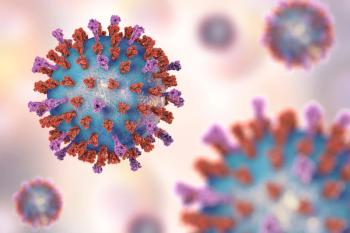
- September 2024
- Volume 90
- Issue 09
A Pharmacist’s Guide to Medical Cannabis Interactions and Patient Care
As access becomes easier, pharmacists are more likely to encounter questions.
MEDICAL HISTORY OF CANNABIS IN THE US
Fitz Hugh Ludlow wrote America’s first book about cannabis in 1857, titled The Hasheesh Eater, in which he observed that practitioners used cannabis sparingly for medicine.1 Sajous’s Analytic Cyclopedia of Practical Medicine, first published in 1912, summarized 3 medical uses for cannabis: as a sedative, an analgesic, and as a drug to improve appetite and digestion.1 Due to the American Medical Association’s (AMA) opposition to the Marihuana Tax Act of 1937, the United States Pharmacopeial Convention removed cannabis from its pharmacopeia in 1942.2 The AMA opposed requiring doctors to pay a special tax to order cannabis for patients.3
In 1956, cannabis was included in the Narcotic Control Act, which resulted in strict federal penalties for its possession or distribution. However, due to wider acceptance of the drug, California legalized medical cannabis 40 years later in 1996.2
USE OF CANNABIS FOR MEDICAL CONDITIONS
Patients must have a qualifying condition in their health record to obtain medical cannabis in states where it is legalized. Medical cannabis is used for anxiety, insomnia, chronic pain, and depression.4 In a small study of 24 participants with social anxiety, those who took cannabis before a public speaking test reported having less anxiety. Data from studies have shown that individuals who take cannabis have less trouble falling asleep and staying asleep, and they have a higher sleep quality. The authors of a 2018 review of multiple studies found that 29% of participants taking cannabis had a 30% reduction in pain compared with 26% of those taking placebo.5
COMMON FORMS OF MEDICAL CANNABIS
Medical cannabis is typically inhaled or administered orally or topically.6 Cannabis can be inhaled using rolling papers, a pipe, or a modern vaporizer device.7 Generally, the effects from inhalation will peak at about 9 minutes and last for up to 2 hours. Inhalation has the advantage of taking effect quickly, but it can cause intoxication and chronic bronchitis.8
The effects of oral forms (tablets, capsules, and chewables) peak in 1 to 5 hours and last for up to 25 hours. Advantages of oral cannabis include a slower and more gradual onset, avoiding inhalation’s adverse effects, and a long duration of action. Some risks of oral forms are repeating doses too soon, patient factors that affect absorption, and difficulty with titration.8
The effects of topical forms, such as lotions, ointments, and balms,7 peak at approximately 2 hours and last for up to 48 hours. Topical cannabis avoids the adverse effects of inhalation and is helpful for patients who may be unable to adhere to other formulations. The topical form’s primary downside is its variable bioavailability, which depends on the product’s makeup.8
ADVERSE EFFECTS AND DRUG INTERACTIONS
Common physical adverse effects of cannabis include an irregular heartbeat, dizziness, slower reaction times, and drowsiness. Mental side effects include feeling happy, short-term memory loss, concentration issues, and anxiety level changes (either increased or decreased).9
Tetrahydrocannabinol (THC), a compound found in the cannabis plant (and the cause of the high feeling), is a CYP1A2 inducer. THC can decrease the concentrations of drugs metabolized by the CYP1A2 enzyme. Cannabidiol (CBD), another compound found in the cannabis plant, is an inhibitor of CYP3A4 and CYP2D6. CBD can increase drug concentrations in drugs metabolized by the CYP3A4 and CYP2D6 enzymes.10
A 2022 systematic review on cannabis drug interactions strongly recommends against the combination of cannabis and warfarin. Researchers reported symptoms of gastrointestinal bleeding with concurrent use. Patients receiving treatment with warfarin should stop recreational cannabis use. If a patient requires medical cannabis, clinicians must adjust the warfarin dose to maintain a therapeutic international normalized ratio.11
A PHARMACIST’S VITAL ROLE
Cannabis is now available for recreational use in certain states, in addition to medical use, making access far easier for more people. The drug’s expanded use heightens the role of pharmacists in counseling patients with questions.
Researchers of a study conducted in Canada analyzed some common questions employees receive at recreational cannabis stores, including the following12:
What are common adverse effects of cannabis?
- Will my current medications interact with cannabis?
- Will cannabis help with sleep?
- Will cannabis reduce my pain?
- Does cannabis help relieve my anxiety or depression?
- Can I use cannabis for my medical condition?
Most employees and managers in recreational cannabis stores lack medical backgrounds and cannot offer medical advice or answer clinical questions. A community pharmacist with the proper training is uniquely positioned to offer counseling. Community pharmacists are easily accessible to the public, trained counselors, and medication experts.12
One particularly common question regards medical insurance coverage. Medical cannabis is legal in 38 states and Washington, DC, but even if a patient has a cannabis prescription, health insurance will not pay for medical cannabis. Cannabis is not FDA approved and is still a Schedule I controlled substance. Physicians cannot prescribe Schedule I controlled substances the same way as other medications. Instead of prescribing medical cannabis, a physician recommends it for a patient and provides the necessary paperwork so the patient can buy the cannabis at a dispensary.13 Cannabis would have to make its way onto the formulary for health insurance to cover the drug. Seeking FDA approval for cannabis would likely necessitate costly clinical trials funded by pharmaceutical companies.13
However, there are some potential shifts in the regulation of cannabis. In August 2023, the US Department of Health and Human Services concluded that marijuana has a “currently accepted use” and recommended that it be reclassified as a Schedule III drug. In May 2024, the US Department of Justice took steps to make this possible by publishing proposed rules in the Federal Register to reschedule cannabis, pursuant to the Controlled Substances Act.14
If marijuana were to be reclassified, regulatory limitations for Schedule III substances would still apply, in addition to marijuana-specific requirements. Importantly, the manufacture, distribution, dispensing, and possession of marijuana would still be subject to the Controlled Substances Act. One challenge with rescheduling would be the regulations imposed on US cannabis dispensaries, which would be required to conduct strict reporting and recordkeeping. The Drug Enforcement Agency is unlikely to have the resources to manage the increased workload.14
As cannabis becomes more accessible to the public, pharmacists are increasingly likely to encounter patients with questions. Pursuing continuing education and reading about the effects and challenges of cannabis use can prepare pharmacists to better serve their patients.
REFERENCES
1. Mathre ML. Cannabis in Medical Practice: A Legal, Historical and Pharmacological Overview of the Therapeutic Use of Marijuana. McFarland & Co; 2010.
2. Schmitz N, Richert L. Pharmacists and the future of cannabis medicine. J Am Pharm Assoc (2003). 2020;60(1):207-211. doi:10.1016/j.japh.2019.11.007
3. Harrison P. American Medical Association opposes the Marijuana Tax Act of 1937. Portland NORML. July 10, 1937. Accessed August 8, 2024. http://www.marijuanalibrary.org/AMA_opposes_1937.html
4. Azcarate PM, Zhang AJ, Keyhani S, Steigerwald S, Ishida JH, Cohen BE. Medical reasons for marijuana use, forms of use, and patient perception of physician attitudes among the US population. J Gen Intern Med. 2020;35(7):1979-1986. doi:10.1007/s11606-020-05800-7
5. Cannabis (marijuana) and cannabinoids: what you need to know. National Center for Complementary and Integrative Health. Updated November 2019. Accessed August 6, 2024. https://www.nccih.nih.gov/health/cannabis-marijuana-and-cannabinoids-what-you-need-to-know
6. Bridgeman MB, Abazia DT. Medicinal cannabis: history, pharmacology, and implications for the acute care setting. P T. 2017;42(3):180-188.
7. Methods of consuming medical marijuana. Patriot Care. Accessed August 6, 2024. https://patriotcare.org/methods-of-medical-marijuana-use/
8. Slawek D, Arnsten JH, Whitley SD, et al. Therapeutic Use of Medical Cannabis in New York State. Johns Hopkins University; 2022. Accessed August 5, 2024. https://www.ncbi.nlm.nih.gov/books/NBK577724/
9. Medical marijuana. MedlinePlus. Updated October 13, 2023. Accessed August 5, 2024. https://medlineplus.gov/ency/patientinstructions/000899.htm
10. Fugh-Berman A, Wood S, Kogan M, et al. Medical cannabis: adverse effects and drug interactions. Government of the District of Columbia Department of Health. Accessed August 5, 2024. https://doh.dc.gov/sites/default/files/dc/sites/doh/publication/attachments/Medical%20Cannabis%20Adverse%20Effects%20and%20Drug%20Interactions_0.pdf
11. Lopera V, Rodriguez A, Amariles P. Clinical relevance of drug interactions with cannabis: a systematic review. J Clin Med. 2022;11(5):1154. doi:10.3390/jcm11051154
12. Cameron J, Dhalla R, Lougheed T, Blanc A, Vaillancourt R. An examination of cannabis-related information typically asked by consumers at retail cannabis locations: a Canadian survey of budtenders and managers. Can Pharm J (Ott). 2023;156(3):150-158. doi:10.1177/17151635231164997
13. Davis E. Why health insurance won’t pay for medical marijuana. Verywell Health. Updated December 23, 2023. Accessed August 9, 2024. https://www.verywellhealth.com/why-health-insurance-wont-pay-for-medical-marijuana-1738421
14. Milenkovich N. DEA proposed rule seeks to reclassify marijuana. Pharmacy Times. July 25, 2024. Accessed August 14, 2024. https://www.pharmacytimes.com/view/dea-proposed-rule-seeks-to-reclassify-marijuana
Articles in this issue
over 1 year ago
Advanced Health Pharmacy Provides Personalized Careover 1 year ago
Pharmacists Can Play a Role in Treating Eating Disordersover 1 year ago
Prepare for Autumn Immunizationsover 1 year ago
Pharmacy Technicians Can Master Professional Integrityover 1 year ago
September 2024 Condition Watch: Sleepover 1 year ago
Wegovy From Novo Nordiskover 1 year ago
Medication Nonadherence Poses Risks to Patient SafetyNewsletter
Stay informed on drug updates, treatment guidelines, and pharmacy practice trends—subscribe to Pharmacy Times for weekly clinical insights.




